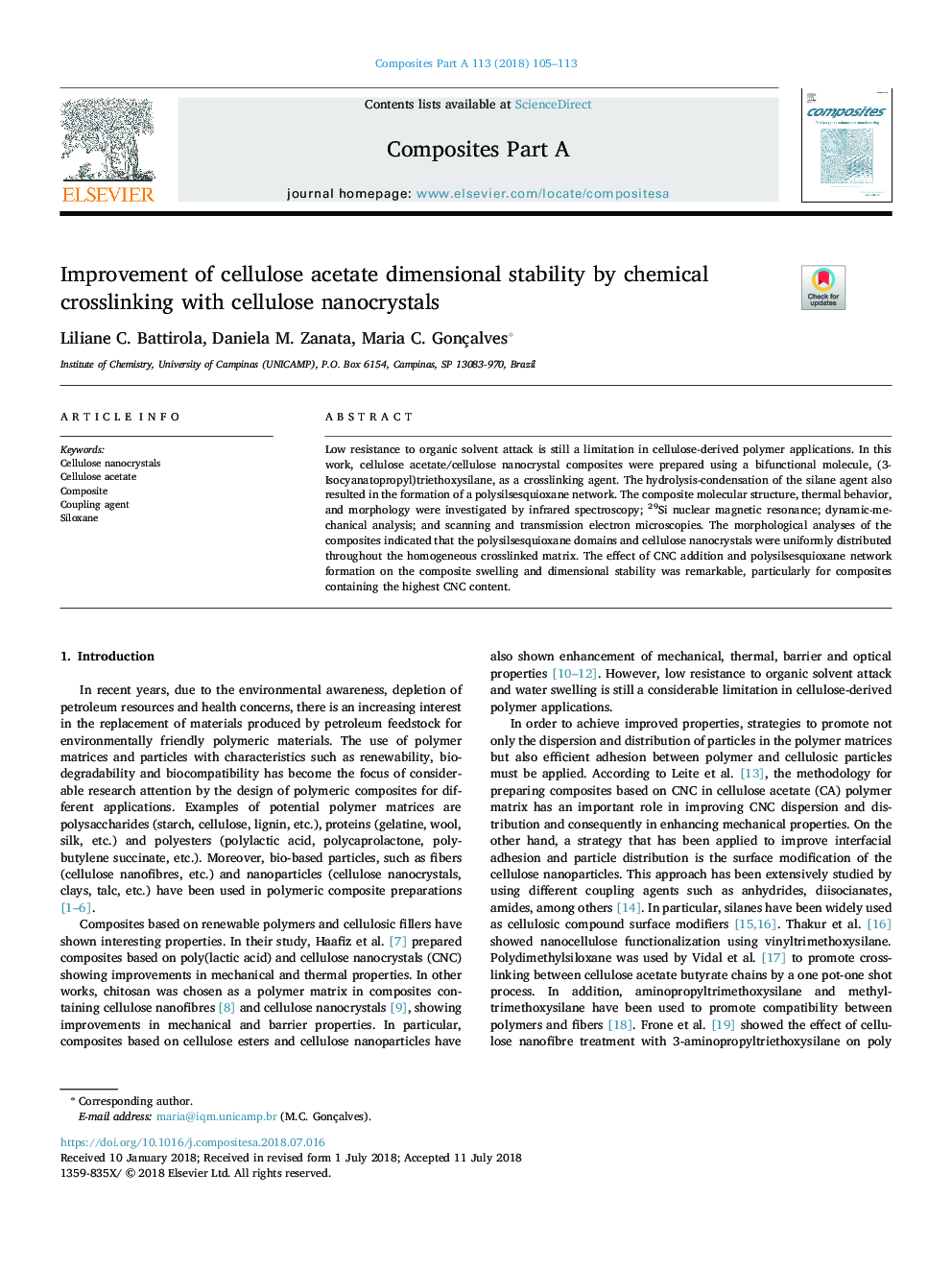| Article ID | Journal | Published Year | Pages | File Type |
|---|---|---|---|---|
| 7889269 | Composites Part A: Applied Science and Manufacturing | 2018 | 9 Pages |
Abstract
Low resistance to organic solvent attack is still a limitation in cellulose-derived polymer applications. In this work, cellulose acetate/cellulose nanocrystal composites were prepared using a bifunctional molecule, (3-Isocyanatopropyl)triethoxysilane, as a crosslinking agent. The hydrolysis-condensation of the silane agent also resulted in the formation of a polysilsesquioxane network. The composite molecular structure, thermal behavior, and morphology were investigated by infrared spectroscopy; 29Si nuclear magnetic resonance; dynamic-mechanical analysis; and scanning and transmission electron microscopies. The morphological analyses of the composites indicated that the polysilsesquioxane domains and cellulose nanocrystals were uniformly distributed throughout the homogeneous crosslinked matrix. The effect of CNC addition and polysilsesquioxane network formation on the composite swelling and dimensional stability was remarkable, particularly for composites containing the highest CNC content.
Related Topics
Physical Sciences and Engineering
Materials Science
Ceramics and Composites
Authors
Liliane C. Battirola, Daniela M. Zanata, Maria C. Gonçalves,
